PUCP: My review
I studied at the Pontificia Universidad Católica del Perú between August and December 2014 in the first half of my year abroad. During the semester, I studied Etnicidad y Población en Perú (Ethnicity and Population in Peru); La Literatura Contemporánea española (Contemporary Spanish Literature); Historia del Arte (History of Art), and Historia del Perú: el Virreinato en los Siglos XVI y XVII (History of Peru: the viceroyalty in the 16th and 17th centuries). The university doesn’t offer accommodation, but it does help international students to find somewhere for themselves; this is one of the aspects I will discuss below.
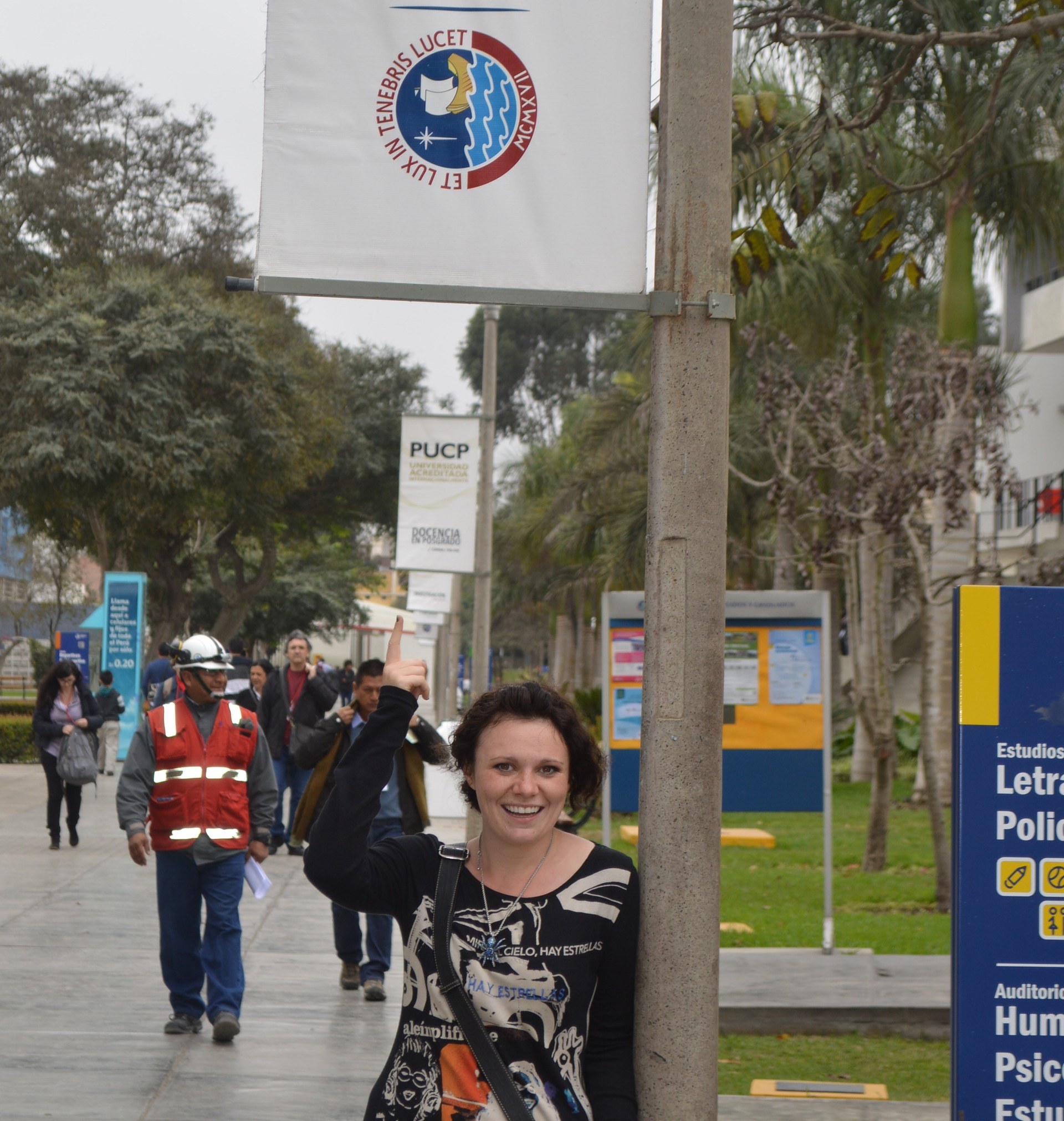 (Standing under one of the university's banners on my first visit to the campus)
(Standing under one of the university's banners on my first visit to the campus)
Accommodation
As I just mentioned, there are no halls of residence at the PUCP campus. That leaves you with three options: live with a family, live with other students, or go totally independent from the university and live with anyone who has a spare room. The latter sounded a bit risky, and I wanted a full authentic experience of living in Lima, so I chose the first option. Many of my friends chose to live with other students and had varying levels of success, but mostly the experiences were positive. There are several Facebook groups for international students moving to Lima, which is how my friends found their flatmates.
If you choose to live with a host or host family, the university is quite helpful; the international coordinator sends you an email with a list of all the approved hosts and their details. These details include the district, the price, the facilities (laundry, bathrooms, etc. ), contact details and if they only accept male or female guests. I was looking for somewhere close to the university and preferably with my own bathroom.
I contacted seven people; a couple of people didn’t respond, a few did but for one reason or another ended up not being quite right – one elderly woman whose forty-year-old son still lived at home kept calling me Julia. And then one seemed to fit. I asked for photographs of the flat and the bedroom, and details such as if the rent included bills and what was included (often a light breakfast and/or lunch is included in the rent, although not always). Then, after talking to her on the phone from halfway across the world, I had a place to live!
I lived with my landlady, her husband, her twenty-two-year-old son and their cat on the top floor of a seventeen-storey building; I had a bedroom with direct access to the terrace, and a semi-private (as in, not officially private but almost exclusively used by me) bathroom. The building was a half-hour walk away from the university straight up Avenida Simón Bolivar.
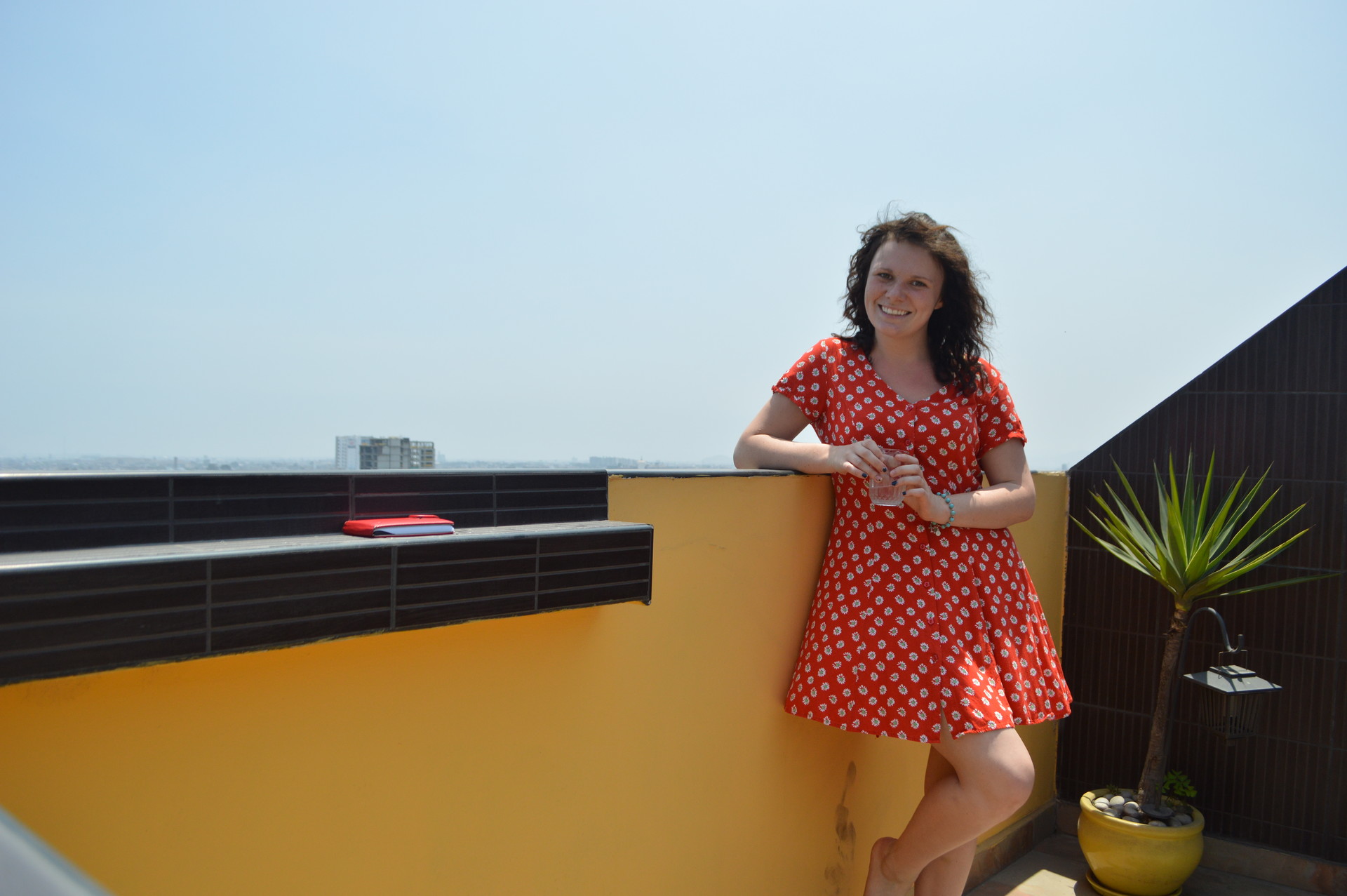 (On the terrace at my home for the semester - soaking up some sunshine! )
(On the terrace at my home for the semester - soaking up some sunshine! )
There were times when I butted heads with the landlady and her son; never with the husband and the cat. Cultural differences were a factor, but mostly it came down to this: each family has its own neurosis and foibles, but when it’s your own family you don’t notice it so much – normal is what you grew up with. But when you are planted in someone else’s family, regardless of where you are in the world, those neuroses are a lot more obvious and sometimes difficult to adjust to; the family also might struggle with a new individual who, not being raised in that environment, doesn’t inherently know or understand what they consider to be their normal attitudes and routines.
So, what it taught me is that, if I have to live with a family, I would rather it be my own – that’s the kind of weirdness I am used to. Occasional clashes aside, the landlady could also be very kind and supportive: on my twenty-first birthday, when I knew nearly no one and my family were seven thousand miles away, she took me to dinner at La Leña and we had a celebratory pisco sour over dinner; when my birthday cards from England hadn’t arrived six weeks after my birthday, she took me to the post office in the next district and demanded that they be found; and when I left Perú, she took me to the airport to see me off at security. She didn’t have to do those things, but she did and I still appreciate it a lot.
Pueblo Libre, as I discussed in a previous post, wasn’t the nicest area of the city, but it was within walking distance of the university. Friends of mine who lived in more affluent districts like San Isidro and Miraflores had to catch combis (like buses, but smaller and without set routes or timetables) to get to the campus, with journeys ranging from half an hour to any hour and a half to get across the city. So, it depends on your priorities whether you live in a nice area or a convenient distance from the PUCP.
My advice to anyone choosing to live with a family is this: talk to them, ask as many questions as you can, and get photos.
Registering
Unlike at the UAB, matriculating at the PUCP is actually a fairly simple and straight-forward process. Once again, it had to be done in person for international students (I believe home students could choose modules online). After a week of trying out different classes and seeing what I liked and which timetables fit (and if the classes still had spaces), it was registration day. My landlady thought ahead and ordered me a taxi for 5am, which meant getting up at 4. 30am. At first, I thought that was a bit extreme, but she was right. I was first in the queue, arriving at the campus gates alone in the dark, but only for less than two minutes. Then the second person showed up; then minutes later, a few more. In total, there must have been nearly two hundred visiting students from other parts of Peru and different countries in the queue by the end.
So, there I was, first in the queue, waiting outside the gates from 5am to 8am; at 8am they let us in to the campus and we queued outside the MacGregor building until about noon. It was Peruvian winter, and although it wasn’t as cold as British winter, it still wasn’t warm and I was tired; on the bright side, it gives you a good chance to get to know some of the other international students who will also be studying there and maybe even make friends.
At noon, they gave us a ticket with a number on it and told us we could go have lunch and come back at 1pm. That’s what we did, then from this queue we were herded into classrooms to sign forms and have our photographs taken; then we went into other rooms to have our module choices individually approved by each department (humanities, letters, sciences, etc. ), and then we had one more queue to have the final seal of approval.
Just before mid-afternoon, it was all done and dusted and time for a celebration lunch. The queue is long, but once it is done, it is all done – and surprisingly not very stressful. Come prepared: know which modules you want to do, make sure there are spaces in the class, bring the paperwork you will need (the powers that be will tell you in your first week), and pack snacks.
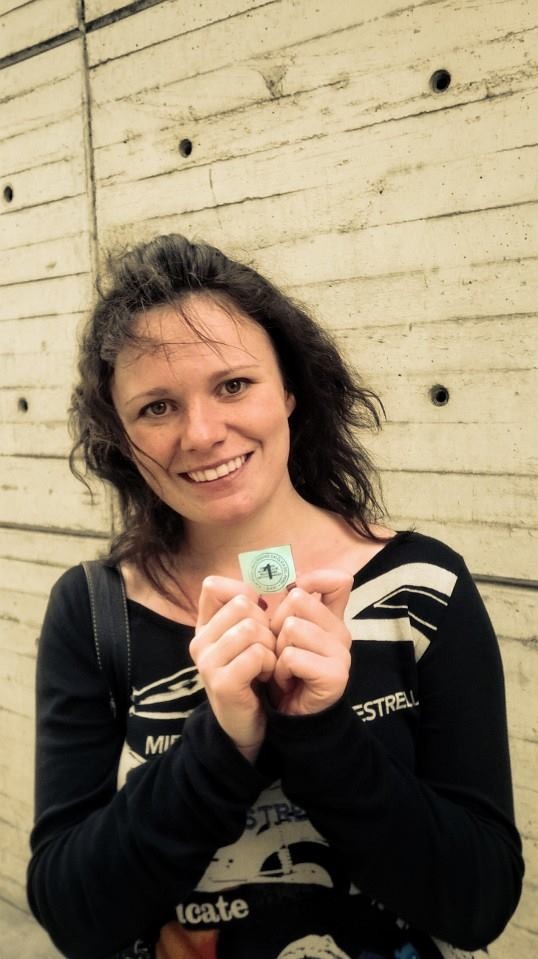 (Number 1 in the queue for matriculation! )
(Number 1 in the queue for matriculation! )
Studying
The PUCP is famous for being one of Latin America’s top universities, and I can see why. The campus is a haven of peace in the relative chaos of Pueblo Libre; enclosed from the outside world by brick and stone walls, it is spacious, clean and feels very open. There are lots of green spaces, trees and even wild life in the campus, including deer and rabbits. As well as greenery and wildlife, the university also contains a part of the Camino Inca. The ruins of the wall built in the Inca empire are protected within the university, and can be found near the basketball courts.
There are also multiple cafes and food establishments; my personal favourite was Ático PUCP. Located on the first floor of one of the buildings, it was cosy with high chairs and tables. The café sold coffees, emolientes (hot, sweet herbal drinks supposedly very good for colds) and several flavours of Frappuccino, including algarrobina; there were also various types of empanada, pastel de acelga (chard and egg pie), and desserts such as the sweet and fluffy tres leches cake. I used to find it a comforting space to go and read my book with a hot drink and something carb-y between classes, when I didn’t have the time or energy to go back to my flat. The campus is also close to the Plaza San Miguel shopping centre, where you could find restaurants and cafés to relax on your lunch break, including a Tanta.
My favourite class was probably Contemporary Spanish Literature, and my grades reflected that. The texts were interesting, the other students were friendly, and the teacher provided strong explanations of historical context. I am also far better at analysing literature and poetry than remembering dates, names and events. The latter was pretty much all that was expected in the 16th-and-17th-century Peruvian History class … I didn’t do so well in that. This was partially down to not always understanding the teacher, who managed to talk for almost two hours straight without taking a breath … he was a nice teacher, but being my first time living abroad, my Spanish was nowhere near up to scratch enough to follow such a long and continuous stream of information.
I also did not realise what a ‘control de lectura’ was until I had one. Beforehand, I had assumed that the control de lectura about El Mundo Hispanoperuano by Professor James Lockhart meant that a guest lecturer would be taking control of the class to talk about the Hispano-Peruvian world … I was wrong. Two hours before the class, someone told me that El Mundo Hispanoperuano was actually a book written by James Lockhart, which we had to read before the class, to then sit an exam about it. If the exam required any kind of analysis or critical thought or discussion of a quote, I could probably have bluffed my way through it. Unfortunately, it was one of those ‘what does the author write about this event/issue? ’ and ‘according to the author, what event caused this thing? ’ kind of exams – all memory, no criticism. I did badly.
Once I figured out the game, I did manage to claw my way up to a pass over the course of the term, but it took a lot of work and memorisation tricks on my part. It also probably helped that for my final presentation, to be performed in front of the teacher, I showed up with about eleven mosquito bites, at least four on my face and neck, as pale as a ghost after three hours of sleep (due to the mosquitoes), and with pages upon pages of evidence supporting my points. I suspect he just gave me a pass on the presentation out of pity.
The History of Art class was interesting, since I knew very little about art going in. The teacher was engaging, with a good voice (as much as I enjoyed the literature class on Tuesday and Thursday evenings, the lecturer’s voice was often equivalent to hot milk and a sachet of lavender – I found it a struggle not to dose off). I passed all of my classes (which at one point in the term, I thought would never happen), and for the most part, I actually really enjoyed studying there and just being on campus.
Hobbies
The university held quite a few activities and had a large gym. My favourite activity, which I mentioned in a previous post about dancing, was the Jueves Saludables lunchtime exercise-dance class. I often attended the free event with another international student, who became a good friend of mine – I do think dancing is a good bonding experience. The university also still runs salsa classes, which I couldn't attend, but my friend enjoyed very much. Although my other pastimes did not take place within the university, I do know that as part of your study, you can choose options like yoga and dance – that means you can get fit, enjoy yourself and get academic credits at the same time!
I also used to like visiting the deer, but I don’t know if that qualifies as an actual hobby. Speaking of animals, the university is walking distance from the Parque de Leyendas, a zoo which also contains even more ancient ruins. I often have a bit of an issue with zoos, and don’t tend to visit them; I once went to Beijing zoo on a school trip and was utterly horrified by the conditions in which the animals were held and how unhealthy they looked. It still disturbs me. But at the Parque de Leyendas, most – although perhaps not all – the animals did seem to have sufficient space, and the park was very clean with little rubbish. I also saw some species of animal I had never come across before, such as one which to me appeared to be a very giant guinea pig. As you might have guessed, I am not a zoologist.
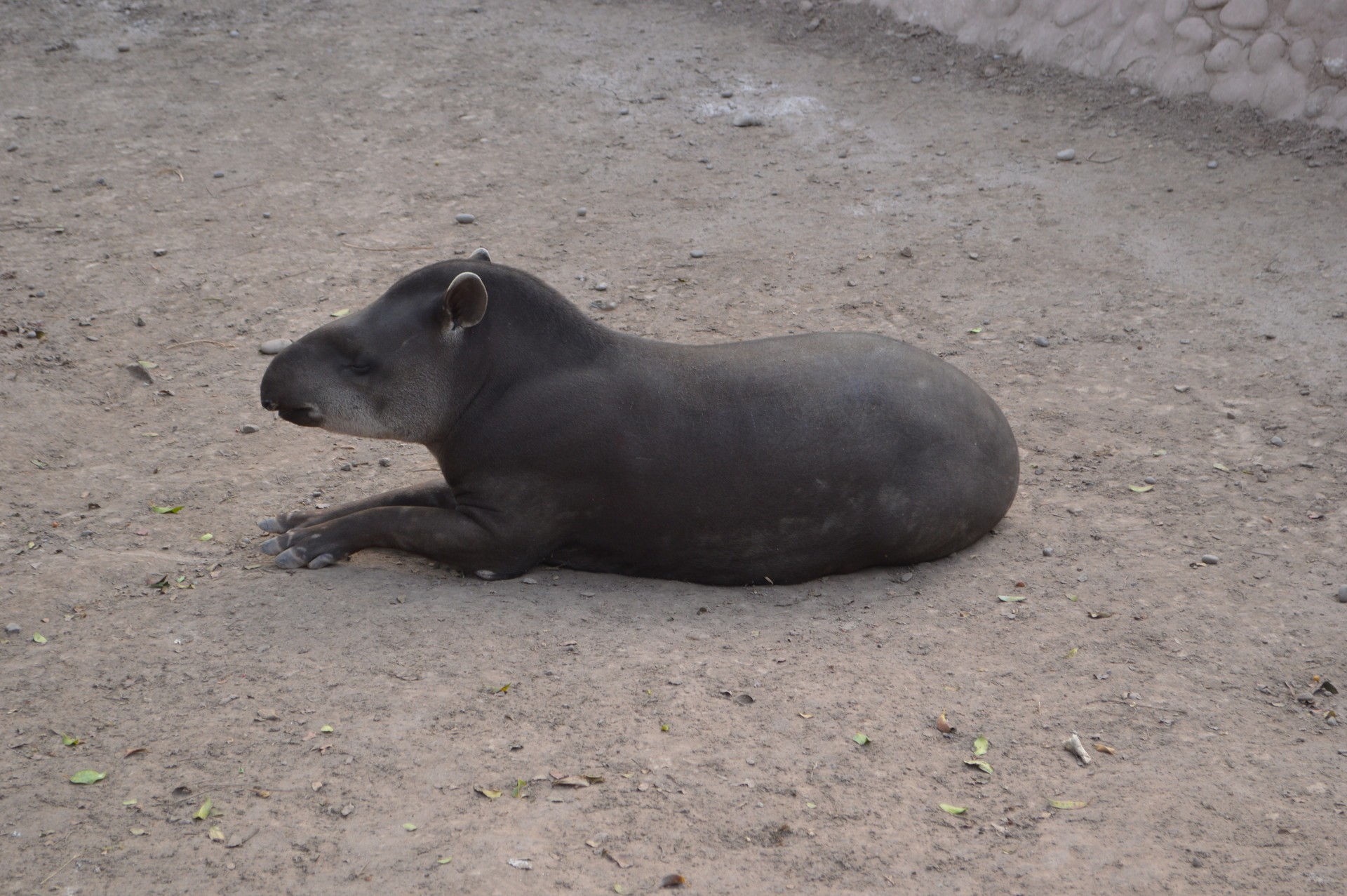 (What is this animal?! )
(What is this animal?! )
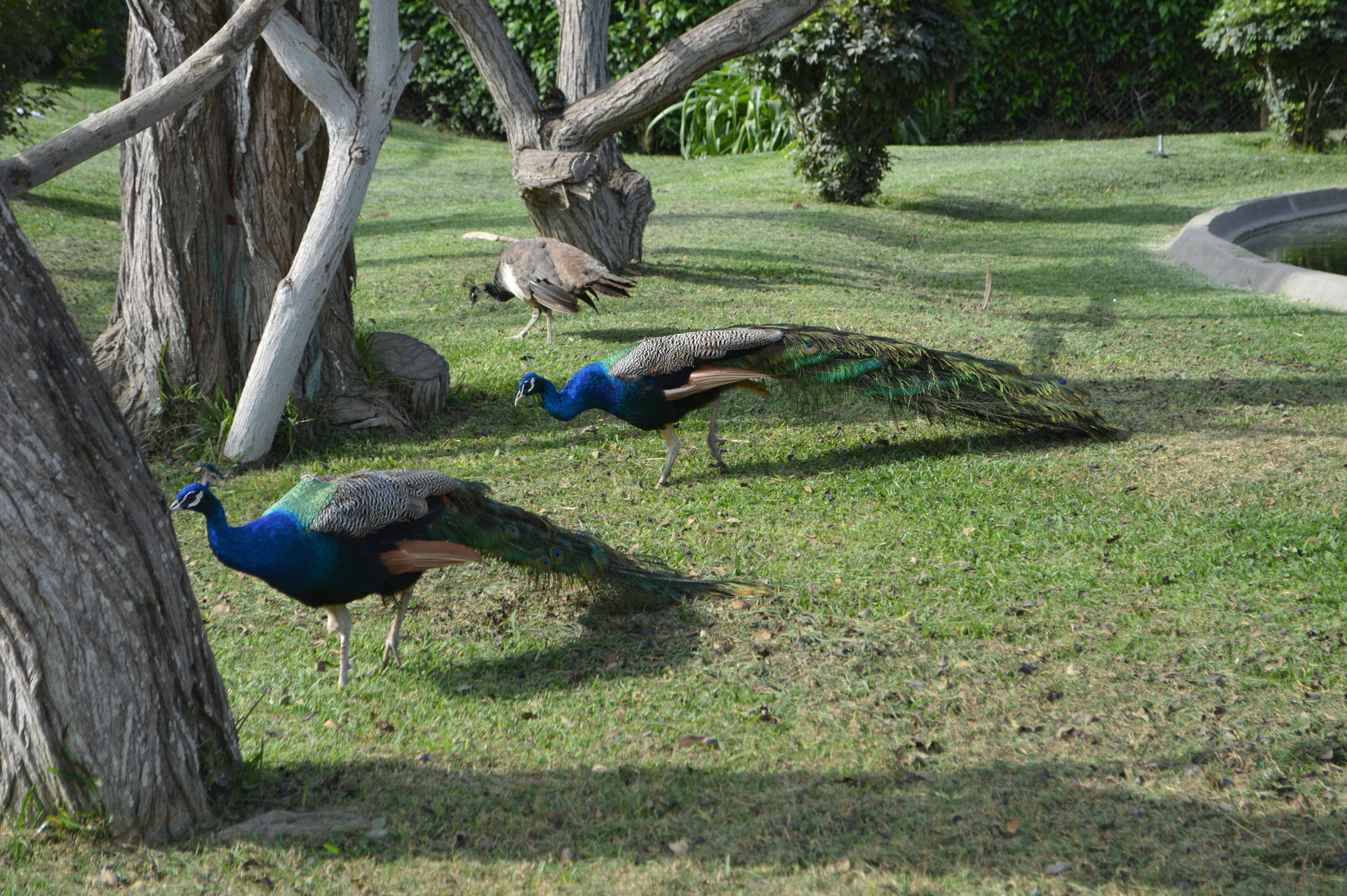 (Peacocks at the Parque de Leyendas)
(Peacocks at the Parque de Leyendas)
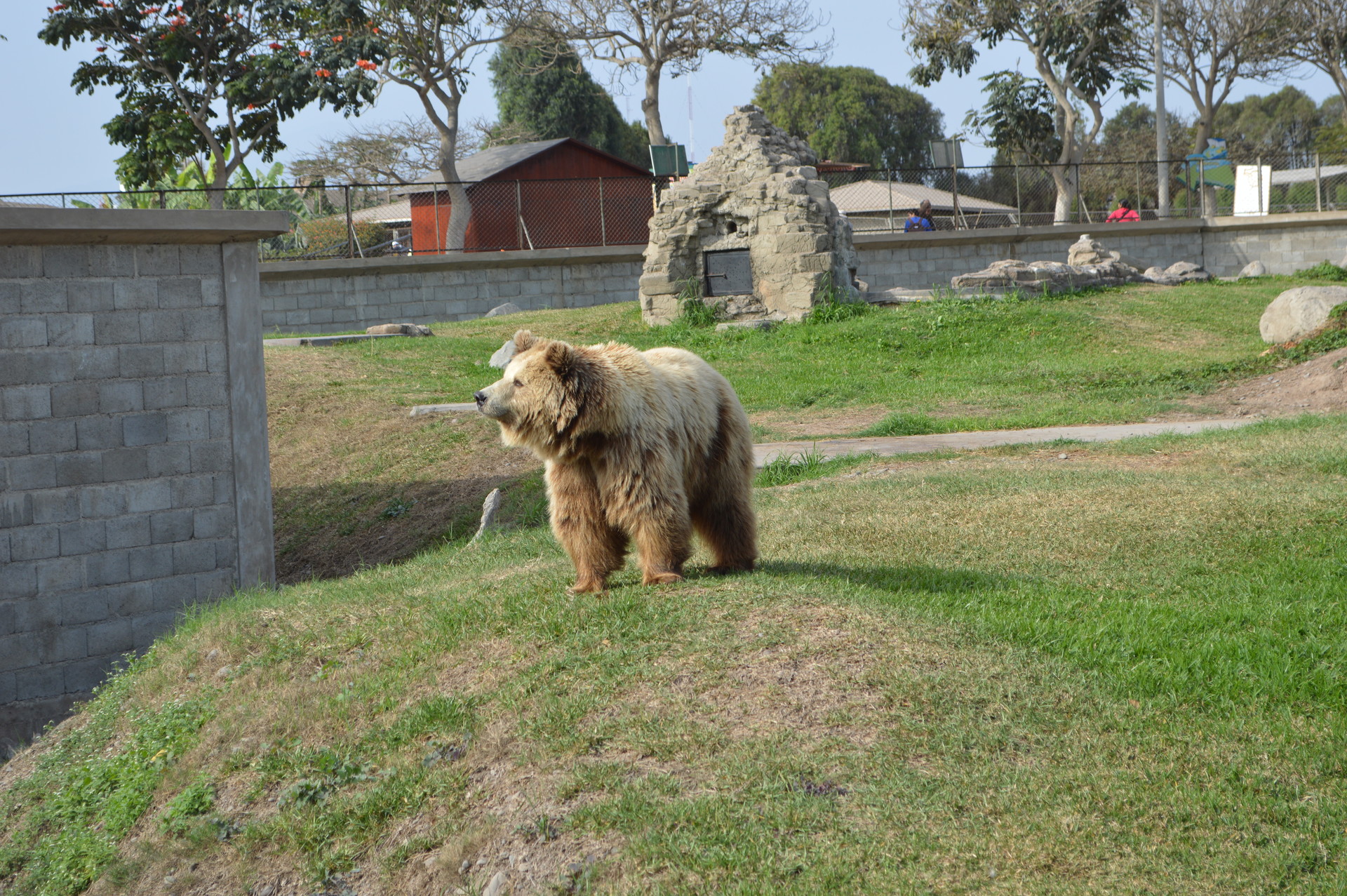
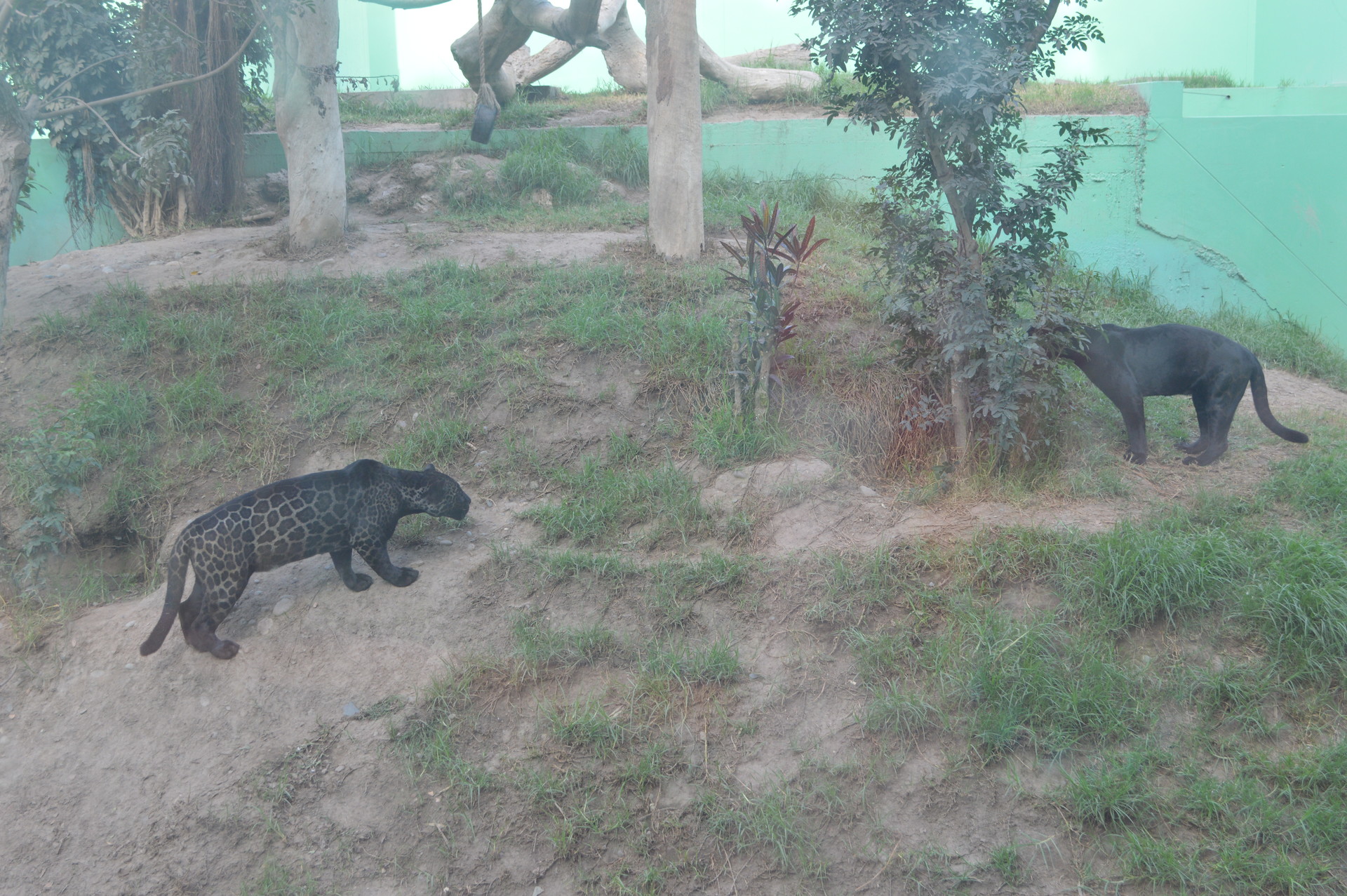
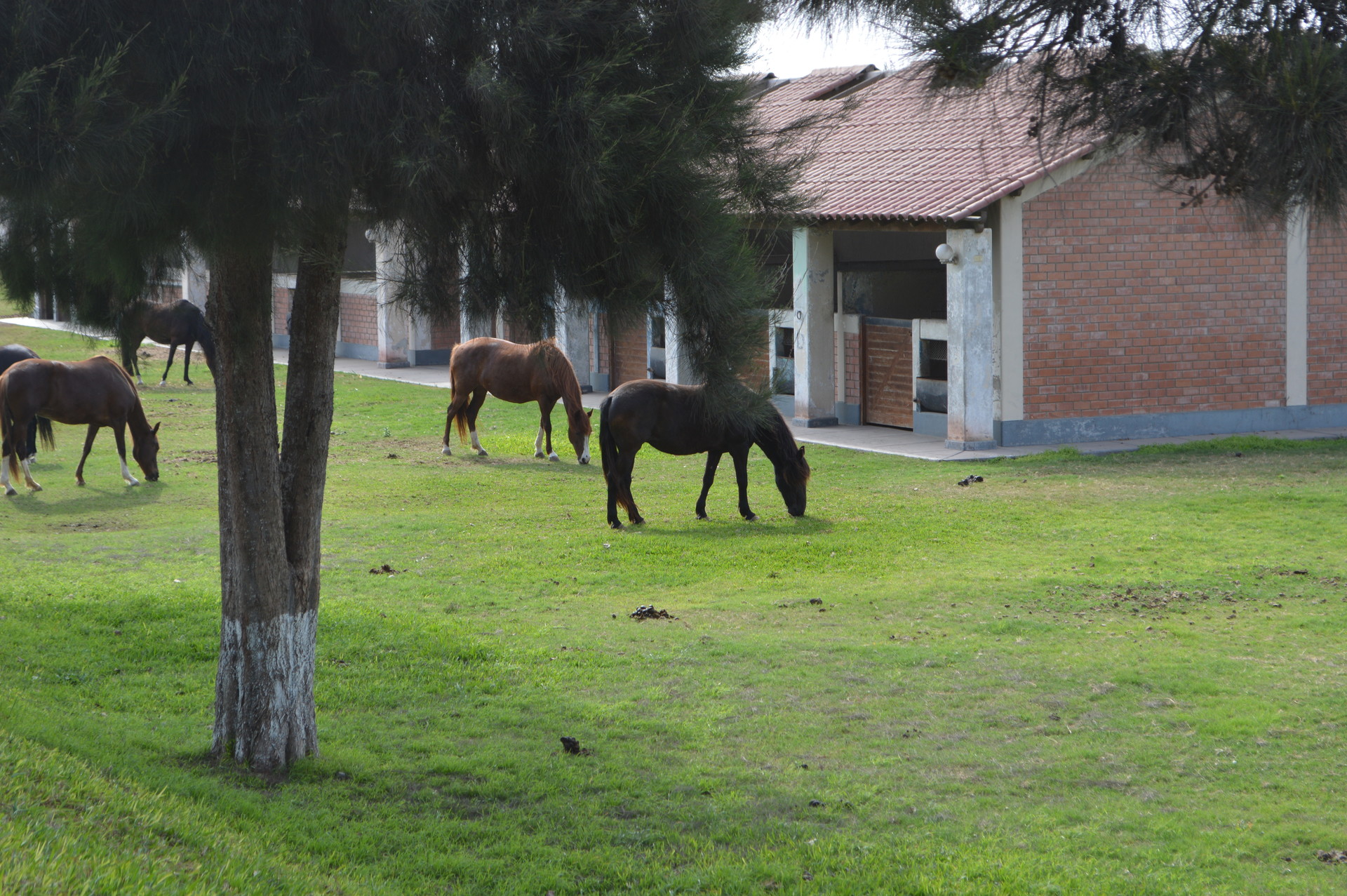 (A selection of animals at the Parque de Leyendas)
(A selection of animals at the Parque de Leyendas)
Conclusion
The PUCP was the first university I studied at during my year abroad, and I really liked it. The campus and its facilities were clean, the grounds were spacious, the cafes were comfortable, and the classes were mostly engaging. The international department was also very helpful, especially the coordinator (Natali Maravi Zavala at the time). I had a lot of questions, and she always found time to answer them and explain anything that I didn’t find totally clear. I appreciated that level of support, especially being so far from home.
Photo gallery
Content available in other languages
- Español: Mi opinión sobre PUCP
Want to have your own Erasmus blog?
If you are experiencing living abroad, you're an avid traveller or want to promote the city where you live... create your own blog and share your adventures!
I want to create my Erasmus blog! →
























Comments (0 comments)